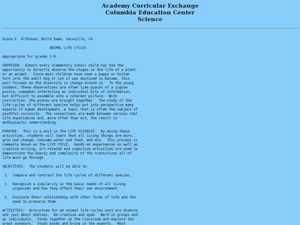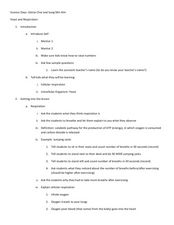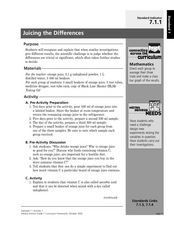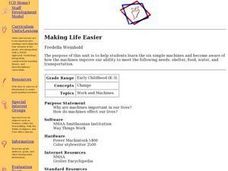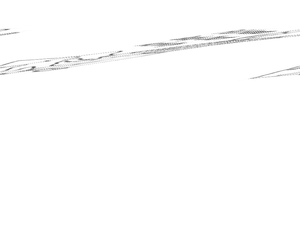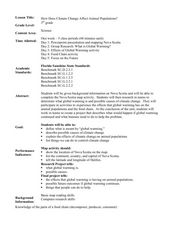Curated OER
The Frigid Gourmet
Young scholars make a " science surprise" or ice cream in the lab. In this melting point depression lesson plan, students use various substances with ice to determine the effects on the melting point of ice and the ability to make ice...
Curated OER
Animal Life Cycle
Students conduct hands-on experiments. In this life cycle instructional activity, students are able to observe a variety of animals as they travel through their life cycle (brine shrimp, mealworms, frog eggs and chicken eggs). Students...
Curated OER
Three Clouds Activity
Students understand how clouds are formed. In this cloud lesson, students participate in three experiments to make clouds. Students complete activity sheets for each experiment.
Curated OER
Yeast and Respiration
Students explore oxygen properties by conducting a cell experiment in class. In this respiration lesson, students discuss the process of breathing and how oxygen is inhaled before carbon dioxide is exhaled. Students utilize yeast, water,...
Curated OER
Juicing the Differences
Seventh graders investigate the vitamin C content of orange juice. In this chemistry lesson, 7th graders analyze the variables that cause result variation in their experiment. They design a new experiment to test variables in question.
Curated OER
Variable Skies
Learners examine factors which affect a vortex and create model tornadoes. They identify variables, pose a testable question, and perform an experiment using the scientific method. After they collect their data, students write a complete...
Curated OER
Explore: Third Grade Scents
Students use the olfactory sense to determine if a marker is appropriate 'food' or not. This experience helps students explain why so many animals rely on the sense of smell to find prey.
Curated OER
The Aquatic Environment
Fifth graders focus on the various types of fish living in different water environments. In groups, they research the different methods used to fish and participate in experiments to determine the effects of mercury on fish, the...
Curated OER
Making Life Easier
Students use a chart of the six simple machines and become aware of how the machines improve our ability to meet the following needs: shelter, food, water, and transportation. Students use model cars to experiment with force. They divide...
Curated OER
Whst Makes You Tick?
Eleventh graders explore the major organs of the circulatory system. In this circulatory system lesson, 11th graders create, identify and describe parts of the system. Students view a list of major organs and predict what their job is....
Curated OER
Insects: Bug Off
Learners design and conduct an experiment to test three organic pesticides to control ants. They view a video that demonstrates ant behavior and the role of pesticides in insect control. In small groups, they set up behavior...
Curated OER
Nutrient Analysis Lab
In this nutrient analysis lab worksheet, students perform several experiments in a lab setting. Students test products for carbohydrates (monosaccharides and polysaccharides), proteins, lipids, and starches.
Curated OER
Comparing Solids, Liquids, and Gases
In this solids, liquids and gases worksheet, learners observe a teacher demonstration about gases and they experiment with liquids to show diffusion, shape and volume. They answer nine questions about the experiments related to solids,...
Curated OER
PRIMARY Activity: Racing Jars
Learners explore how mass affects speed in this hands-on physics experiment. For this mass and speed lesson, students fill a baby food jar with water and leave a second jar empty. They roll the 2 jars down a ramp to observe which jar...
Curated OER
Human Body Activity
In this human body learning exercise, 2nd graders experiment making a full-sized human body portrait. Students discuss the human body organs and their functions. Students follow and complete 8 precise directives in making a human body...
Curated OER
Osmosis
Fifth graders explore osmosis as they watch organisms divide. In this organism lesson plan, 5th graders use potatoes to experiment with the effects of salty water in the body. Students discuss what osmosis is and record what happens in...
Curated OER
How Does Climate Change Affect Animal Populations?
Students investigate the effect of climate change on animal population in Nova Scotia. In this environmental science lesson, students complete a Nova Scotia map activity and research the causes of global warming in small groups. Students...
Curated OER
Your Own El Nino
Learners conduct an experiment. In this El Nino lesson, students learn where El Nino storms come from, what they consist of and what effects they have. Learners also complete an experiment where they create a miniature El Nino.
Curated OER
Geologic Sequestration
Learners investigate how geologic sequestration reduces carbon dioxide concentration in the atmosphere. In this earth science lesson, students simulate oil mining in the lab. They write down their observations and complete the lab report...
Curated OER
Educating K-12 Students about Glacier Dynamics in a Changing Climate
Students determine which of the following parameters, slope, ice, temperature or basal condition affects the glacier speed the most. They create their own experiment to test what influences glacier speed and temperature of the ice.
Curated OER
The Jelly Bean Problem
Students are challenged to eat some candy as a cell would need to do it. By solving this problem students simulate the cell process called endocytosis. They think about some of the problems that arise when a cell ingests food.
Curated OER
The Artemia Hatchery
Students, in groups, develop their hatcheries, working cooperatively in its design and construction. The lessons begin with the introduction to Artemia as a primary food source of many aquaculture species during their larval stages.
Curated OER
Stomach Chemistry
Fifth graders compare physical and chemical changes. They perform a simulation experiment/activity that replicates what happens in the stomach as food is digested by stomach acids.
Curated OER
Tornado In A Bottle
Students are able to visualize a tornado usig a simple experiment. They are divided into small groups. Students drill a 3/8 inch hole in the center of each bottle cap. Students connect the caps to the top of each other using glue. ...



